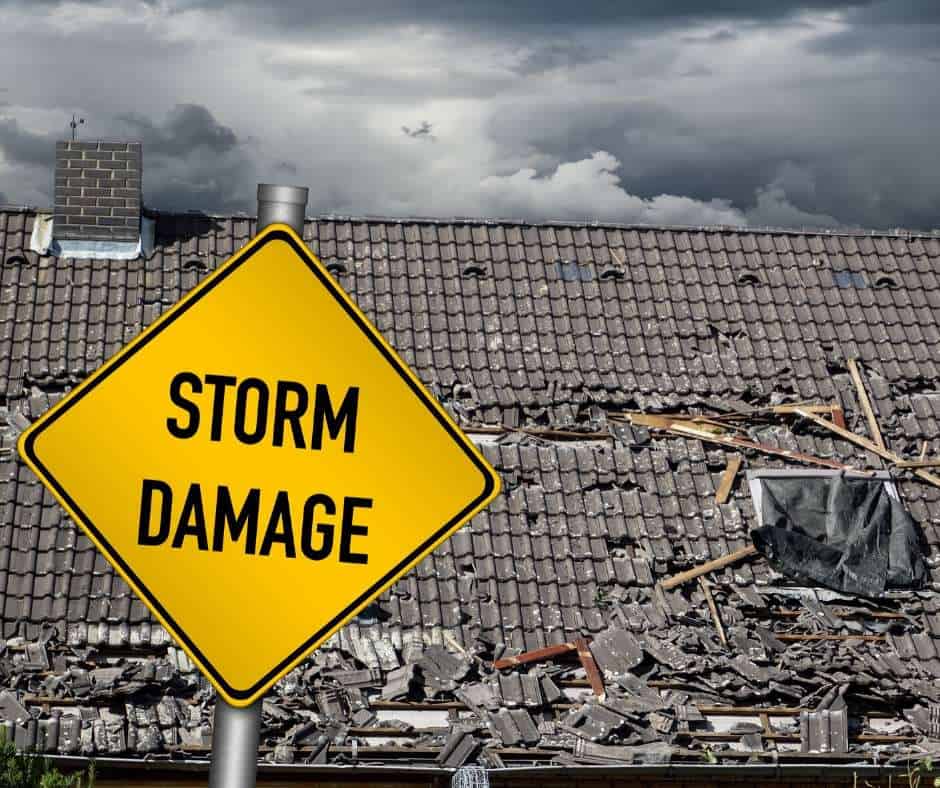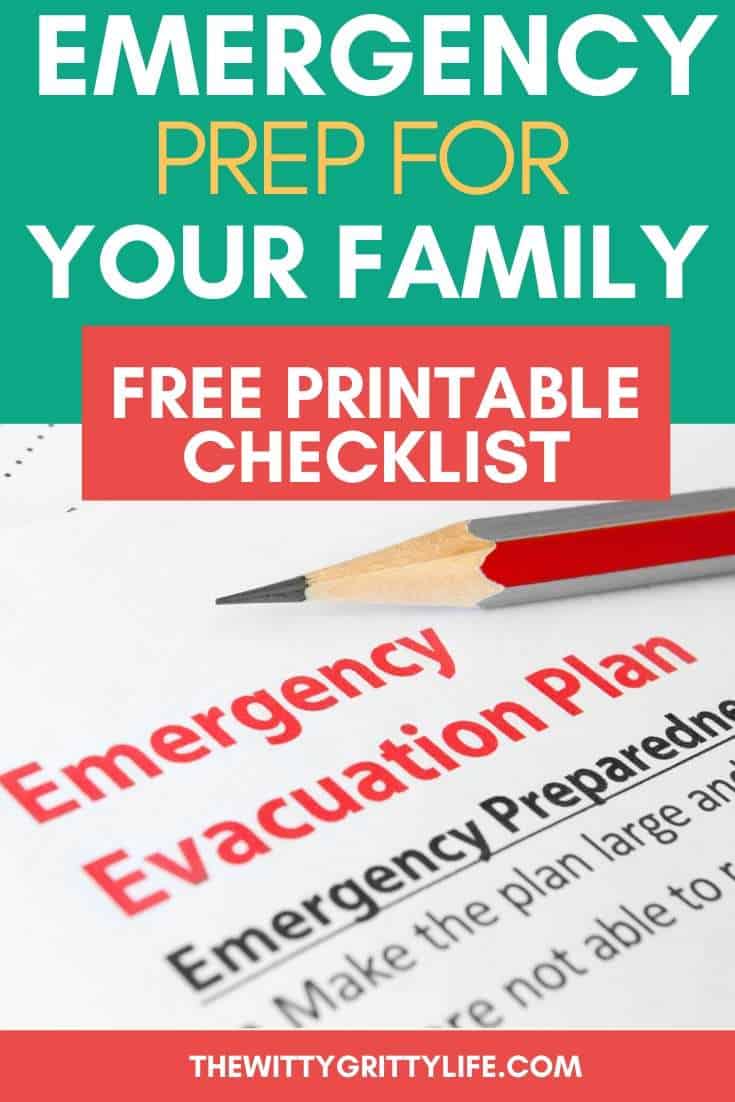Updated 3/20
Would you and your family be prepared for disaster?
Imagine the following scenario: You awake in the middle of the night to the ominous sounds of tornado sirens going off. You quickly check your phone and turn on the TV and discover that a big, destructive tornado appears to be headed straight for your neighborhood. The meteorologist on your favorite TV station is urging you to seek cover now in your safe spot, as this is a potentially life-threatening situation.
You quickly heed the advice and hunker down with your family and pets in either your basement or the most interior, windowless room in your house. Maybe you have just enough time to grab some type of padding or other protective gear before the brunt of the storm passes right over, or Heaven forbid, through your home. The power goes out. You and your family are absolutely terrified for the few minutes it takes to rip apart everything you have worked for so hard all of your life.
Suddenly, a deadly silence sets in and it is over as quickly as it came. As you try to look at each other in the darkness, pat each other down to make sure everyone is okay you discover that, thankfully, they are, except for a few minor scrapes and scratches. You may or may not be able to find your way out to find everything around you in a state of utter devastation. Dazed and numb from the cold realization of what just happened and that from here on out, you begin to realize that life will never be the same.
Once the terror and confusion of the destructive tornado have passed, you are faced with the reality of having to find a way out, to get to a safe place if possible or shelter in place, because safe passage may not be possible. There may be downed, live power lines all around you, you cannot see well in the disorienting darkness of night and you wouldn’t recognize much anyway at this point.

You shift into survival mode, knowing that securing shelter, getting information and making sure your family members have what they need is priority number one. If only you had assembled all of the things you have read about so many times, only to put it off for another day. Life was just too busy to bother getting prepared for something that was likely never going to happen anyway.
On Memorial Day night 2019 our community was struck unexpectedly by what later turned out to be a total of 15 tornadoes, one of them a category EF4 that stayed on the ground for thirty minutes and covered 19 miles. Scenarios similar to what I just described played out over and over again. The devastation of the Memorial night tornadoes is unimaginable and right out mind-blowing. Many big buildings were reduced to match sticks in a matter of mere seconds. It will take those parts of our community years to rebuild and the needs of those who survived the tornadoes of that night are great, only beginning with the basics like food, shelter, toiletries, medical care, and clothing.
Hearing the faint sound of tornado sirens off in the distance that night, I got out of bed to alert my husband who was downstairs. Together, in utter disbelief and shock, we watched the weather reporter tell those in the direct path to seek shelter immediately and that this was a life-threatening situation!
Luckily, we were spared any damage – this time. The only inconvenience we had to “endure” was a water boil advisory issued for our area, because the pumps at the main pumping station in the city had been knocked out for some time. First world problems, right? Eight years earlier, though, an EF zero tornado passed right over our neighborhood, causing considerable damage to windows, roofs, siding, and trees. We were without power for days. The experience left all of us shaken.
While we got off easy yet again, it brought one burning question to the forefront: Would we have been prepared, had the path of the tornado veered toward us this time?
The simple answer is a resounding NO. Would you be?

If preparing for an emergency like tornadoes is something that you been meaning to do, but keep putting off, you are not alone. After all, what are the odds? For us, the Memorial night tornadoes were an urgent reminder that being prepared is something each and every household has to take seriously. It’s high time to remedy that problem, so you won’t find yourself without the necessary gear to keep you and your family safe, hydrated and fed in case of an emergency. Getting and staying prepared for severe storms and tornadoes is part of living in the midwest and increasingly other parts of the country. While I am mainly discussing how to prepare for the event of a devastating tornado, many tips can be used for other emergencies as well. I will post additional resources for all types of disasters and how to prepare for them at the bottom.
Five Steps to Help you Be Prepared for Disaster
This is one of those instances when you definitely need to plan for the worst! It may sound intimidating to try and cover as many aspects as possible, but with a solid plan in place, you can definitely do this! Supplies will run low immediately after the damage is done and you may not even be able to get out of your neighborhood, maybe even your house, for some time. If you are caring for an elderly parent or someone with special needs and/or dietary requirements, being well prepared is not something you should do, it is something you MUST do.
Today I am going to walk you through some action steps you can take to help you become prepared for the next tornado warning in your neck of the woods. While it won’t keep disaster from happening, you will at least have the peace of mind of knowing you did everything you could ahead of time. You won’t be one of the people scrambling to get what you need to survive.
This post contains affiliate links for your convenience. You can read my affiliate link policy here.
#1. Find the Safest Area in Your Home to Weather the Storm
This usually means the basement, away from windows, doors, and corners. Windows will likely shatter, doors can get pushed in and debris has a tendency to collect in corners. Make sure every family member knows where the safe spot is well ahead of time.
No basement? Generally a bathroom or closet in the middle of your home will work best. In an apartment building head for an interior staircase and to the lowest floor. Bringing some kind of cover or padding and even bike helmets can add an extra level of protection. In our house, a tri-level home, the designated safe area is in the basement underneath the stairs.
To know where you should go in any other type of building, such as a multi-story apartment building, highrise, mobile home, etc. check out this helpful guide on the NOAA website.
#2. Pack an Emergency Survival Backpack for Each Family Member
While a stockpile of food, water, and other emergency supplies makes nothing but sense (I will get to that later in the post), what will you do if you need to leave your home on a moment’s notice? You will never have the time nor the presence of mind to find everything you really need – guaranteed. Preparing a grab and go kit for each member of the family puts you far ahead of the game. Even if you need to shelter in place each member of your family needs to be prepared. An emergency survival bag ensures that everyone in your family has what they need for the immediate aftermath of a catastrophe.
You can purchase ready-made emergency kits or you can create your own for a whole lot less. While I have included convenient links for you here, many of these items can also be found very inexpensively at your local Dollar Tree store. You may even have some of them on hand already! Being the intrepid, budget-conscious DIY’er that I am, this is something I prefer to put together our own kits. Creating your own also allows you to customize each pack for everyone’s individual needs. Our son is prone to frequent nosebleeds and is on a special diet, so it makes sense for me to include supplies and snacks specific to his needs.
Time to use those old backpacks you didn’t know what to do with! If you are in the market for some new backpacks, these are affordable, roomy and you can designate a different color for each family member. Alternately, should you be reading this close to back to school time, that is the best way to snag a great deal on backpacks and buying them in person allows you to really get a feel for size and practicality.
Here’s what should be included in each backpack:
Find detailed, printable emergency checklists in my FREE Resource Library, along with other helpful resources for you to keep handy at all times. If you don’t do anything else to prepare, make sure you have these on hand!

Don’t forget to tag each person’s backpack clearly with name, address and contact information!
- Medications – a minimum of 3 day supply, ideally enough for a week
- Bottled water (2)
- Snack bars, jerky, fruit leather, nut butter packs, crackers
- Disposable poncho
- Foil emergency blanket
- Small flashlight
- Lightweight change of clothes, including underwear and socks in a Ziploc bag
- Copies of important papers: insurance cards, ID cards, medication list
- Hand sanitizer – learn how to make your own in this post
- Small first aid kit
- Basic toiletries/personal care items
- Multitool for eating
- Whistle
- Waterproof matches
- Chem lights
- Spare pair of prescription glasses
- optional for small children: small stuffed animal for comfort
- cash money
#3. Prepare for Your Pets
Let’s not forget our pets! Animals scare easily and can disappear in an instant during a storm. Should the worst happen, the last thing you want to worry about is wondering what happened to Fido or Fluffy. To learn how to create a bug-out bag for your furry family member, you can find a ton of useful information about making sure your animals are taken care of in the event of a disaster on the Humane Society website. I found a wonderful bag that holds all of the supply needs for your furry friend at chewy.com. It’s a great investment because it’s great to have on hand for travel, regardless and will work well for dogs and cats. I am a real sucker for dual purpose gear! #organizedpet
As for every other family member, be sure to have ample water and at least a three day supply of pet food on hand. Storing pet food in a watertight container will ensure that it stays fresh.
Should you need to seek shelter in your safe spot, have a crate or carrier at the ready to keep your dog or cat confined safely to one area. The rigid carrier or crate will also help protect them from flying debris. Keep an extra dog leash in your safe shelter area at all times. While this is usually your basement, many homes do not have one so set up a spot under your bathroom sink with necessary items.
Have your pets microchipped if they aren’t already! Also, keep a collar on each animal with name and phone number or microchip number. It’s the best way to ensure you can be reunited, should they get out of the house for any reason.
Be sure to include copies of vaccine records, microchip information and other important details on hand and place in a waterproof zip bag.
#4. Have important Information on Hand
You made it through the tornado, you have your emergency packs, food, etc., but you need to leave your home. Where will you go? Each community/county has a plan in place with designated shelter locations. Be sure to research and document your shelter options well ahead of time. Most people have no idea where to go and who to turn to during emergencies.
Here are some ideas for phone numbers that might come in handy:
- Non-emergency number for your local police and fire department
- Power company to report outages
- Gas company to report gas leaks
- Close neighbors and friends to check on their well-being or to make arrangements for spending the night if needed
- Doctors and hospitals
*Find printable checklists in the FREE Resource Library
Make copies of ID cards, medical insurance cards, driver’s licenses, medical alerts, etc., keep them in a watertight plastic bag.
For peace of mind keep a copy of every important document along with current pictures (on a thumb drive) of all valuable items and appliances in a safety deposit box at your bank.
Sadly, disasters can bring out the very worst in some and looting is often rampant in the aftermath. Being able to provide proof of ownership is crucial to filing an insurance claim that will allow you to recover as much of your lost property as possible without adding even more to financial hardship. On that note, make sure your home is properly insured. This is especially important if you rent an apartment or home. (Assuming most homeowners carry insurance)
Important Tip: Communication can be difficult during and after a disaster has struck. Cell phone towers may get knocked out, or power may run low, leaving you with an intermittent signal at best. To let your family and loved ones know your status, record a voice message to answer calls in the event that they try to call, but cannot reach you.
#5. Create a Shelter In Place Kit
You have created an emergency bag for each family member, so you can leave quickly if you need to. What if you can’t leave and are advised to shelter in place for several days?
Here are some of the most basic and important items every household should have on hand:
- tarps, plastic sheeting, duct tape – to create a waterproof shelter
- enough water for every family member, including pets for a minimum of three days: 1 gallon per day for each
- non-perishable food items: canned meats, soups, meals, jerky, protein snack bars, fruit leathers, trail mix – be sure to have a can opener on hand – be sure to consider special dietary needs for each person
- batteries in different sizes
- camping toilet (trust me on this one) and toilet paper
- paper towels
- baby wipes
- disposable gloves
- small shovel
- plastic bags
- ax, a good knife, rope
- first aid book
- a good flashlight and/or camping lantern
- cell phone charger – either battery or solar-powered
- blankets, pillows
- sturdy pair of shoes for every person – many injuries happen after the storm has passed when people step on nails protruding from boards
- tools to shut off utilities – familiarize yourself with how to do that well ahead of time and practice shutting off your water main if possible. Learn how to approach shutting off utilities.
- leather work gloves
- battery operated NOAA radio
It’s best to store all of your supplies in sturdy, waterproof tubs close to your designated safe spot in your home. Food items need to be checked and replenished on a regular basis, approximately every six months. Just use up food that is close to its expiration date and buy new from the grocery store to keep costs down. No need to be wasteful!
Keep at least a gallon of water in each bathroom so you can flush the toilet if needed. More is better, provided you have room for it. Some toilets cannot be flushed during a power outage or the water supply may be turned off. This is a lesson I learned the hard way!
Other important information to consider:
While it is easy to believe that once a tornado has passed, the worst is over, studies have shown that as many as 50% of tornado-related injuries occur after the storm. Most of those injuries can be attributed to rescue attempts, heavy, falling or rolling objects, electrocutions, fires, and explosions. Stepping on nails accounts for nearly a third of tornado-related injuries. Keep those tetanus shots up to date my friends!
Avoid using candles and opt for battery-powered lanterns instead to decrease the risk of fires.
Do not use any gasoline, propane, natural gas or charcoal powered devices (think generators, pressure washers, gas grills, propane stoves, etc) indoors or near open windows. This applies for your garage as well. Carbon monoxide is an odorless, colorless gas that can cause sudden illness and death if inhaled.
Stay off the phone unless you need immediate help for a true emergency such as a life-threatening injury, fire, etc. This helps keep phone lines open for true emergencies. You may help save a life.
Follow all instructions from law enforcement. Don’t venture off into damaged areas on your own to reduce the risks of further injury.
If you are feeling slightly overwhelmed by all of the suggestions you just read, don’t be. Just remember that as long as you continue to build your emergency supplies for your family you are doing the right thing. Enlist the help of your spouse and kids. Make this something that everyone in your family can take real ownership in. Make a habit of picking up a little extra on your weekly grocery trips to add to your food and water stockpile. You will be amazed at how quickly it adds up. Repurpose various items like old blankets, pillows, old boots, and other tools and supplies you probably already own but are storing elsewhere.
I will be working on our emergency preparedness over the coming weeks and months and plan on popping in here with a few more things you can do to get ready that are not a top-notch priority, but good to know and have.
If there is anything you would like to add to these tips and suggestions please feel free to do so in the comment section below. You can also share your wisdom on our Facebook group. Not a member yet? Well, what’s keeping you?
For a more real-time view of what I am up to, be sure to follow me on Instagram to see what I am working on next.
I hope this post has provided you not only with the motivation to become prepared for a disaster but that you will increase its impact by sharing it with your friends on Facebook and on Pinterest. You just might save a life.
And finally this:
In the event that a catastrophe like this should ever take place near you, don’t make a field trip to inspect the damage up close. Curious people can seriously hinder rescue and cleanup efforts by congesting already taxed roadways. If you want to see an area of devastation and the impact it has had on the people in it up close, sign up as a volunteer to help with cleanup, distributing food and whatever else might be needed. You can make a huge difference that way in the lives of many!
Don’t forget to sign up for the FREE Resource Library to get your free printable checklists and access to so much more!
For more information on how to prepare yourself and your household, including those with special needs, the elderly and pets for disasters be sure to check out these helpful websites:
I hope this post has inspired you to make sure you and your family will be adequately prepared for disaster. While no one will ever be able to cover each and every aspect of what might happen, certain items such be on hand at all times.
May you stay safe, out of harm’s way and never need any of them. But just in case, you will have peace of mind knowing that you did your best to be prepared!

Don’t forget to pin this post so you can find it again easily!




This is a very important article. I hope many will read and heed. TFS
Thank you! Yes, that is my hope as well!
Wow! Great post! I haven’t thought about this in quite awhile! We use to have these kinds of things ready In the closet but I haven’t looked in a long time!
Thank you! I know, it is so easy to put those things on a back burner.
Karin, this is such good info! I’ve been through at least major tornadoes and preparation is key.
Thank you! The thought of being stuck without food, water and other important tools and supplies is not appealing, that’s for sure!